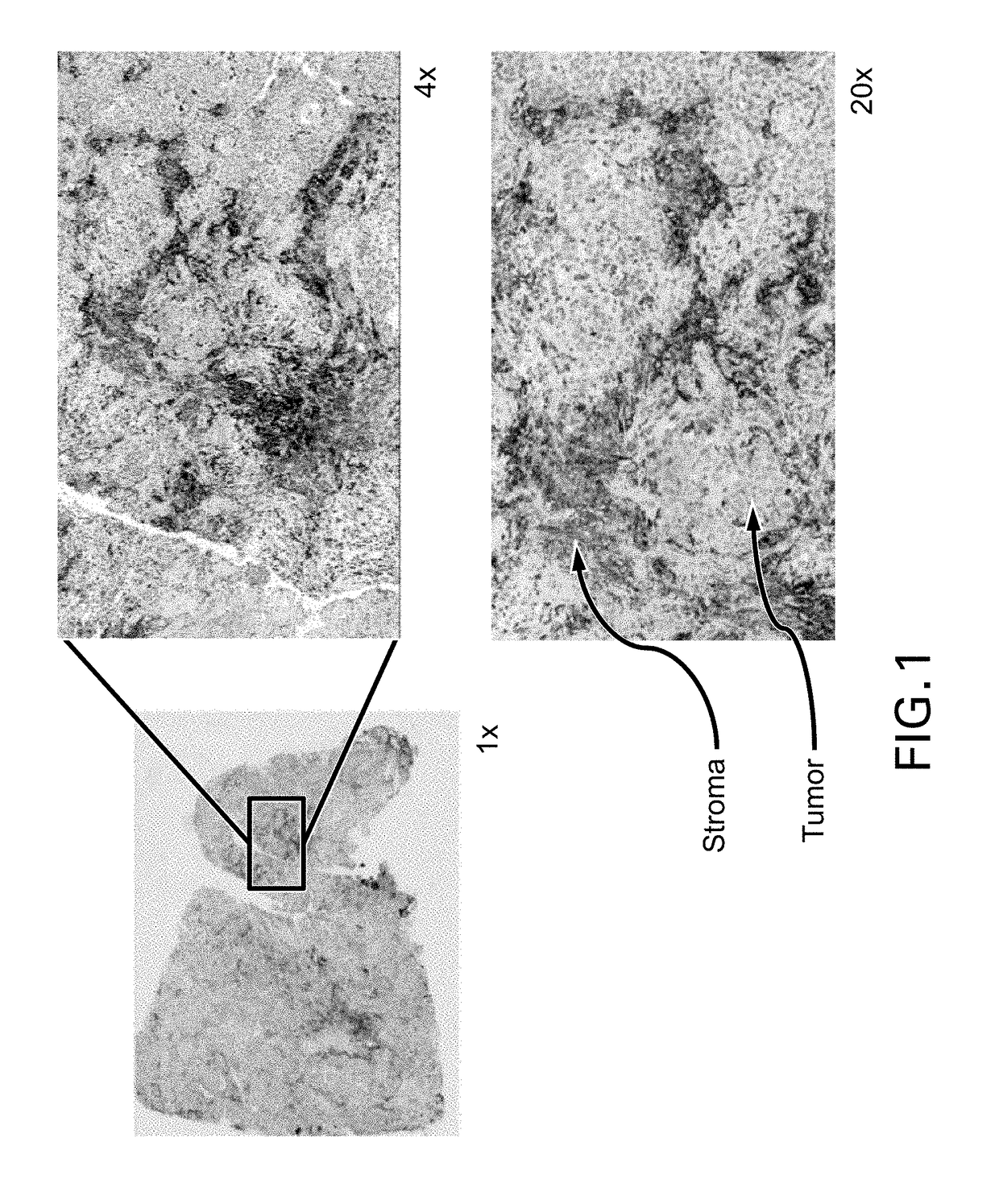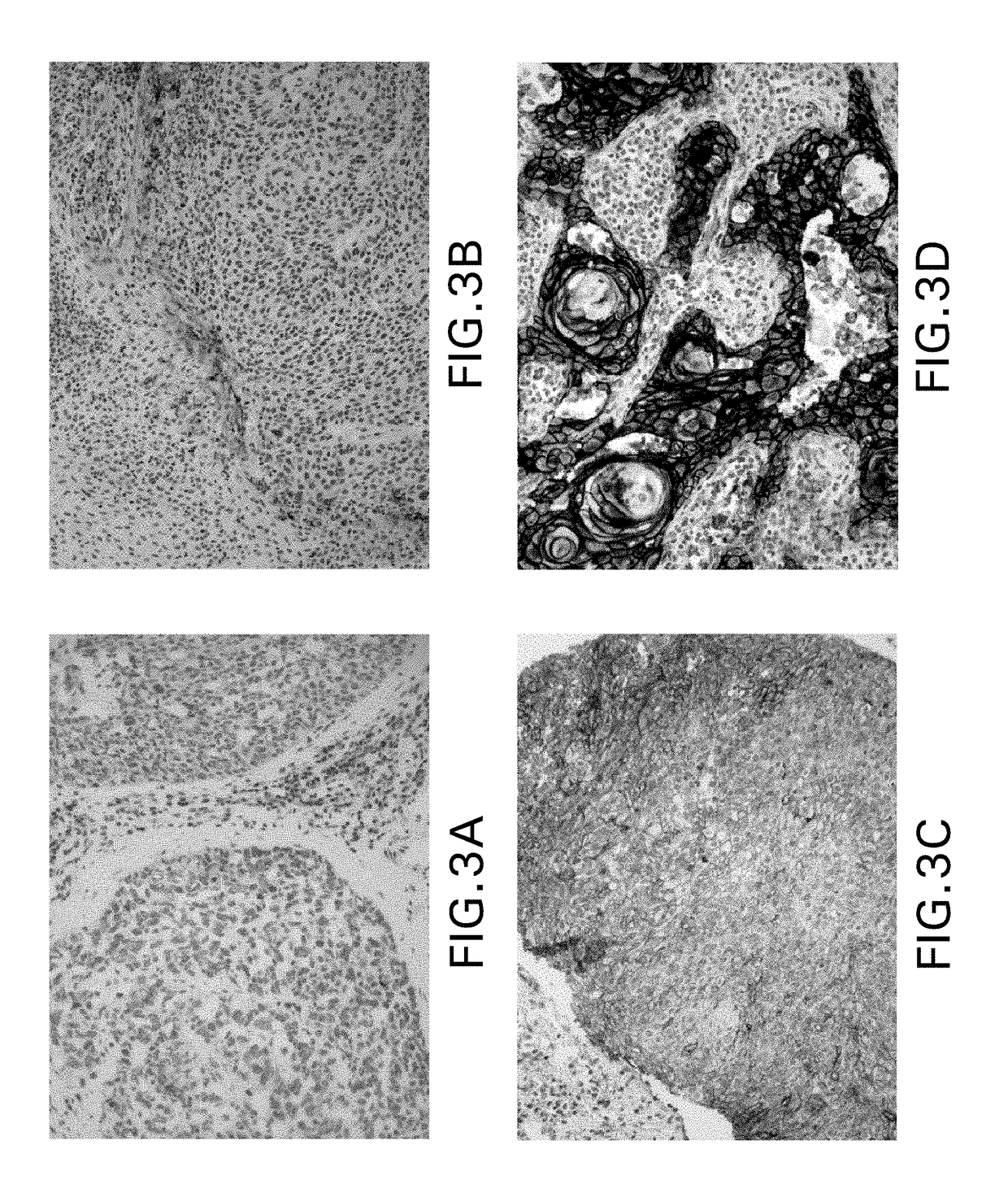Immunohistochemical assay for detecting expression of programmed death ligand 1 (pd-l1) in tumor tissue
a tumor and immunohistochemical technology, applied in the field of immunohistochemical assays, can solve the problems of poor prognosis, reduced overall survival irrespective of subsequent treatment, and correlated pd-l1 expression, and achieve the effect of facilitating standardization of pd-l1 expression quantification
- Summary
- Abstract
- Description
- Claims
- Application Information
AI Technical Summary
Benefits of technology
Problems solved by technology
Method used
Image
Examples
embodiment 2
3. The process of embodiment 2, wherein the cancer is NSCLC.
4. The process of any of the above embodiments, wherein only the MPS is assigned.
5. The process of embodiment 1 or 2, further comprising:[0132]examining the stroma surrounding each tumor nest for the presence or absence within the stroma of a band of membrane-stained cells, and[0133]assigning to the tissue section a stroma score of positive if the band is detected in the stroma surrounding at least one tumor nest, or[0134]assigning to the tissue section a stroma score of negative if the band is not detected in the tissue section.
6. The process of embodiment 5, wherein the tumor sample is from a cancer selected from the group consisting of non-small cell lung carcinoma (NSCLC), head and neck squamous carcinoma, and transitional bladder carcinoma, and the process further comprises designating the tumor sample as positive or negative for PD-L1 expression,[0135]wherein the tumor sample is designated as positive for PD-L1 expres...
embodiment 9
10. The process of embodiment 9, wherein the anti-PD-L1 Ab is selected from the group consisting of, the monoclonal antibody 20C3, the monoclonal antibody 22C3 or the monoclonal antibody 5H-1.
11. The process of embodiment 9, wherein the anti-PD-L1 Ab is the monoclonal antibody 22C3.
12. A method for predicting if a human patient diagnosed with non-small cell lung carcinoma (NSCLC) is likely to respond to treatment with a PD-1 antagonist, comprising:[0155](a) obtaining a modified P score (MPS) for the level of expression of programmed death ligand 1 (PD-L1) in a tumor sample removed from the patient; wherein the MPS is obtained by performing a scoring process that comprises:[0156](i) obtaining a tumor tissue section from the sample that has been stained in an immunohistochemical (IHC) assay with an antibody that specifically binds to human PD-L1 (anti-PD-L1 Ab);[0157](ii) examining each tumor nest in the tissue section for staining; and[0158](iii) assigning the modified P score (MPS) ...
embodiment 12
13. The method of embodiment 12, wherein the specified threshold is MPS=any number between 80 to 100.
PUM
| Property | Measurement | Unit |
|---|---|---|
| threshold | aaaaa | aaaaa |
| volume | aaaaa | aaaaa |
| pH | aaaaa | aaaaa |
Abstract
Description
Claims
Application Information
 Login to View More
Login to View More - R&D
- Intellectual Property
- Life Sciences
- Materials
- Tech Scout
- Unparalleled Data Quality
- Higher Quality Content
- 60% Fewer Hallucinations
Browse by: Latest US Patents, China's latest patents, Technical Efficacy Thesaurus, Application Domain, Technology Topic, Popular Technical Reports.
© 2025 PatSnap. All rights reserved.Legal|Privacy policy|Modern Slavery Act Transparency Statement|Sitemap|About US| Contact US: help@patsnap.com



